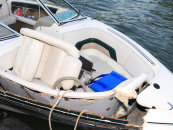Recently, Biosecurity Queensland has announced that an exotic marine pest, known as white colonial sea squirt, has been detected in Queensland. According to the general manager of Biosecurity Queensland, John Robertson, although the sea squirt has not created any major impact in Western Australia, the Northern Territory, or New South Wales, it is worth preventing it from gaining a foothold in Queensland.
Biosecurity Queensland highlights the importance of properly maintaining boats and equipment, and having boat hulls regularly cleaned to minimise any further spread of exotic marine pests. These maintenance activities include:
● application of antifouling paint;
● cleaning the boat in a dry dock or slipway (out of the water);
● looking out for any attached pests; and,
● checking and cleaning gear, including pots, nets, fishing or diving gear, anchors and ropes, before moving between locations.
Boat antifoul is a special type of paint used on the bottom of boats to protect them from microorganisms, including marine pests such as the sea squirt, that can eat away not only at fibreglass boats, but also timber and many other types of hulls.
Boat antifoul is used to put a protective layer between your boat and the marine life. Once applied it normally lasts between 12 and 18 months, depending on your boat’s location. In high-flow tidal areas, boat antifouling will need to be done a little more regularly than in a slow-moving tidal area due to many more microorganisms passing by and attaching to the boat, increases growth.
Gold Coast Antifouling offers a one-stop service for all your boat antifouling needs, and a range of additional services, such as marine covers and boat repairs. For professional and quality tradespeople, contact Paul: 0417 173 257 or goldcoastantifouling.com.au
To know more about the marine pests,
visit www.qld.gov.au/environment/coasts-waterways/marine-pests
If you see a suspicious marine organism please report it to Biosecurity Queensland on 13 25 23.



























